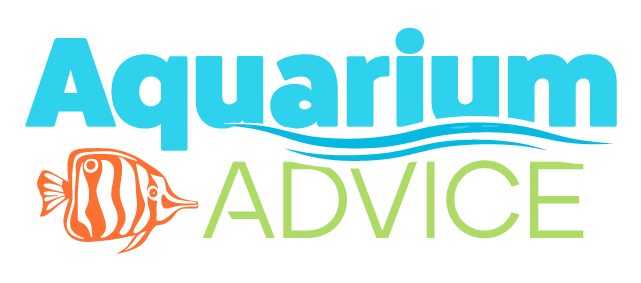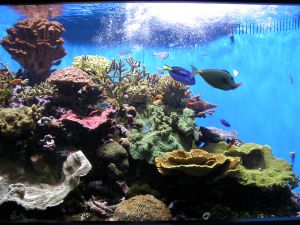Tank cycling basics. Learn about reducing ammonia levels to keep your fish healthy, how ammonia is produced and what you can do to prevent buildup.
Did you listen to the local store employee and run your filter for 24 hours before adding fish? I did and like you, I now know the error of my ways. So what to do after you put fish in the tank and then learn about the need to “cycle” your tank? What is cycling anyway? I don’t even own a bicycle!
In a nutshell and at the very basic level, cycling a tank is allowing bacterial colonies that consume harmful compounds to grow to a level to keep your fish healthy. The first bacteria to appear consume Ammonia (NH3) and excrete Nitrite (NO2). The next to show up consume Nitrite and excrete NitrAte (NO3). Both Ammonia and Nitrite can hurt fish long term or be deadly on the short term. Nitrate (NO3) is less harmful and fish can acclimate to it. I prefer to keep my levels under 20 PPM, but up to 80 PPM can be fish safe. Where does the Ammonia come from? Your fish produce it in their waste and any left over food (or rotting plants) decompose into Ammonia. A fishless cycle, which is preferable by most standards, involves adding an ammonia source (usually a decaying shrimp or pure non-scented ammonia) and allowing the bacterial colonies to grow before fish are added. But what if you didn’t know about any of this before buying those gorgeous fish? This is the point that a lot of folks (including me) start to get a bit overwhelmed. There’s really no need for it though. Get a liquid test kit (API Master FW is my favorite) and follow the directions. Don’t waste your money on test strips. They are more expensive in the long run and a lot less accurate. The test results will tell you what to do.
If Ammonia or Nitrite equal .25 PPM or higher, it’s time to do a water change! Remember to use a good dechlorinator, like Seachem’s Prime. If you measure .50 PPM and do a 50% change, you will be at .25. Do another 50% change and you’ll be at .125, etc. Ok, well that’s all well and good but I already have fish! What should I do now?! Seriously think about returning some or all of your fish and doing a fishless cycle. There’s a great sticky on it here… http://www.aquariumadvice.com/forums/f15/fishless-cycling-for-dummies-103339.html. If you absolutely can’t bear to part with your new finned friends, it’s time to roll up your sleeves and get dedicated. TEST your water daily (or more) and change it as needed! You may need to do this more than once a day so don’t be surprised. This regimen shouldn’t last longer than a month or so. Despite perpetual rumor and misinformation, changing water WILL NOT slow down your cycle and will keep your fish healthy. The bacteria that we need for a healthy “cycled” system live in the filter media, gravel, and décor, but don’t really exist in substantial amounts in the water itself. Can I do anything to speed things up? Yes! Get some nasty old filter media (Filter pad, bioballs, biowheel, etc.) or a handful of used gravel from a healthy established tank and put it into your filter or a filter sock in your tank. This will “seed” your system with the bacteria needed and significantly speed up cycling for you.
How do I know when my tank is cycled? Your Ammonia levels will gradually give way to higher Nitrite levels. Nitrite will lower to zero and Nitrates will start to rise. When you consistently test zero for Ammonia & Nitrite and have increasing Nitrate, you have a cycled tank! (Woohoo!) Remember that each fish you add will add more Ammonia and that time should be allowed for the bacteria to catch up. Add slowly and responsibly and you will enjoy the hobby even more and your fish will thrive. Happy Fishkeeping!

